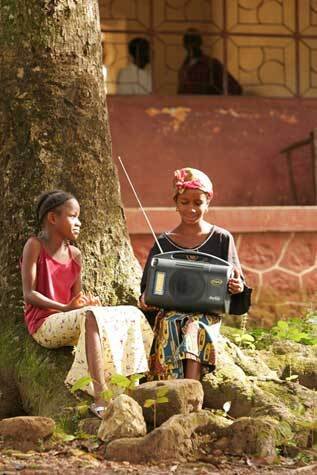This year’s International Day of the Girl theme, Digital Generation, Our Generation, celebrates the potential of digital technologies while calling for the inclusion of all girls in accessing technology. The digital revolution will not be realized if girls without access to digital solutions are left behind. For years, advocates of technology for development have been repeating the mantra that technology is not a panacea. Yet in racing to connect, catch up, and create greater access, we ignore at our own peril the inconsistent or non-existent household- and community-level access girls have to technologies. While digital solutions are available and evolving all the time, they should be accompanied by hybrid methods which include new ways to use analog technologies, so that existing local resources are reimagined and redistributed in ways that support more girls learning.
If we want to ensure equal access to technology to close the gender digital divide, these on-the-ground realities are critical to decision-making and planning. To be clear, the global COVID-19 pandemic amplified digital platforms for learning, training, and connecting, but at the same time some 2.2 billion young people below the age of 25 still do not have internet access at home. Girls do not have equal access to or equal ownership of phones or tablets in the home, and they lack opportunities to gain the digital literacy, which would enable them to grow their own learning, expand their information sources, or communicate with others. The gender digital divide has increased in recent years, with only 15% of women in lower- and middle- income countries using the internet. Globally, girls have significantly less access to the internet, tablets, mobile phones, radio, and television than boys, further exacerbated by household poverty levels, geography, disability, and competing social cultural norms. An estimated 52% of girls have to borrow a mobile phone if they want access compared to 28% of boys. These technological gender gaps are most often due to girls and women lacking access, skills, familiarity with tools, representation and participation in STEM, and leadership and resource support to become champions within the technology sector.
Continue reading: http://www.ipsnews.net/2021/10/girls-access-technologies-true-digital-revolution-will-sight/
If we want to ensure equal access to technology to close the gender digital divide, these on-the-ground realities are critical to decision-making and planning. To be clear, the global COVID-19 pandemic amplified digital platforms for learning, training, and connecting, but at the same time some 2.2 billion young people below the age of 25 still do not have internet access at home. Girls do not have equal access to or equal ownership of phones or tablets in the home, and they lack opportunities to gain the digital literacy, which would enable them to grow their own learning, expand their information sources, or communicate with others. The gender digital divide has increased in recent years, with only 15% of women in lower- and middle- income countries using the internet. Globally, girls have significantly less access to the internet, tablets, mobile phones, radio, and television than boys, further exacerbated by household poverty levels, geography, disability, and competing social cultural norms. An estimated 52% of girls have to borrow a mobile phone if they want access compared to 28% of boys. These technological gender gaps are most often due to girls and women lacking access, skills, familiarity with tools, representation and participation in STEM, and leadership and resource support to become champions within the technology sector.
Continue reading: http://www.ipsnews.net/2021/10/girls-access-technologies-true-digital-revolution-will-sight/

